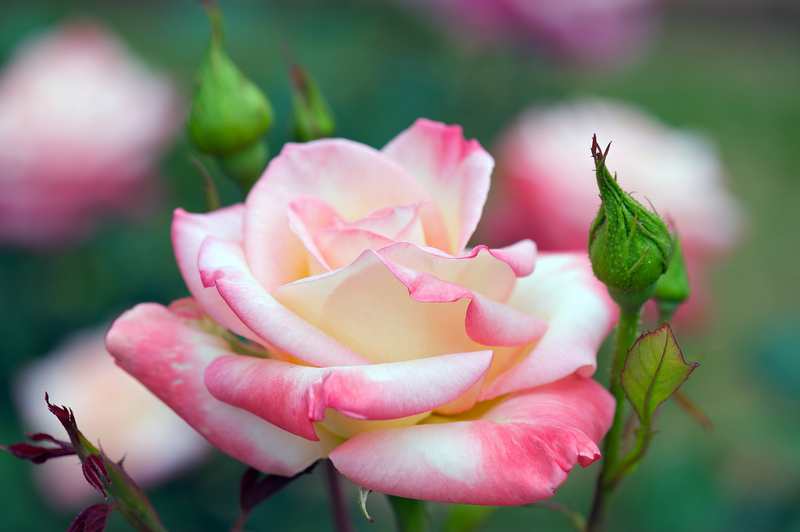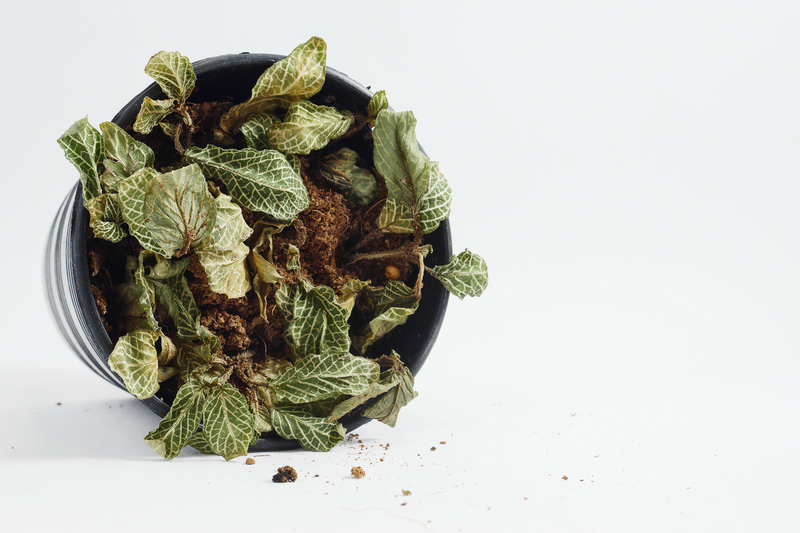Sculpting Nature: Artistic Hedge Trimming Shapes and Techniques Unveiled
Posted on 15/09/2025
Sculpting Nature: Artistic Hedge Trimming Shapes and Techniques Unveiled
Artistic hedge trimming is more than simple landscaping--it's the fine art of sculpting living foliage into imaginative forms and structured shapes. As gardens and green spaces become personal refuges and expressions of creativity, the allure of sculpted hedges and ornamental topiary has blossomed. In this comprehensive article, we uncover the fascinating world of hedge shaping, delving into eye-catching designs, expert tools, trimming techniques, and insider tips for both beginners and seasoned gardeners.

Introduction to Artistic Hedge Trimming
Throughout history, gardens have been shaped by skilled hands, turning mundane shrubs into stunning forms that evoke wonder and delight. Whether it's the iconic topiary animals of historic European estates or contemporary geometric patterns in modern parks, sculpting shrubs and hedges bridges horticulture and artistry.
The main keyword for this article, artistic hedge trimming, embraces many terms: topiary, hedge sculpting, shaped hedging, hedge artistry, and creative shrub pruning.
The Origins and Evolution of Hedge Sculpting
Artistic hedge shaping has ancient roots. Roman gardens showcased clipped evergreens. During the Renaissance, French and English landscapes flourished with extravagant topiary art. The modern revival reflects a fascination with personalized, green living spaces.
- Ancient techniques: Early civilizations practiced formal pruning for structure and beauty.
- European Topiary: From the 16th-century Italian gardens and formal parterres to intricate knot gardens and mazes in France and England.
- Contemporary approaches: Today's garden artists blend tradition with freeform, whimsical, or abstract designs.
Popular Artistic Hedge Trimming Shapes
The variety of shapes achievable in hedge sculpting is vast, spanning the classic to the avant-garde.
1. Geometric Precision
- Balls: A timeless shape, requiring regular maintenance to retain crisp lines.
- Cubes and Rectangles: Perfect for formal gardens and to delineate spaces.
- Cones and Pyramids: Add vertical interest and structured grandeur.
2. Ornamental Topiary Figures
- Animals: From rabbits to elephants, topiary animals spark whimsy and delight visitors of all ages.
- Spirals and Waves: Flowing forms create movement and drama along pathways.
- Abstract Artistry: Organic curves and unpredictable silhouettes showcase creative freedom in hedge art.
3. Living Sculpture and Green Architecture
- Arches and Tunnels: Make inviting entrances and shaded walkways.
- Green Walls: Vertical hedges offer privacy and eco-friendly aesthetics.
- Mazes: For large estates, labyrinthine hedges are classic crowd-pleasers.
Whether you prefer disciplined perfection or imaginative flair, sculpting hedges provides endless opportunities for self-expression.
Best Plants for Artistic Hedge Sculpting
Not every shrub is suited to intricate shapes. The ideal species for hedge artistry possess dense foliage, small leaves, and willingness to sprout after pruning. Here are popular choices:
- Boxwood (Buxus): The classic, slow-growing and forgiving for topiary beginners.
- Yew (Taxus): Hardy, shade-tolerant, perfect for formal hedges and detailed configurations.
- Privet (Ligustrum): Fast-growing and adaptable, suited for living sculptures on a larger scale.
- Lonicera nitida: Small leaves and resilience make it favored for intricate trims.
- Holly, Viburnum, Myrtle, and Thuja: All excellent for robust, long-lasting shapes.
Always consider climate, soil type, and maintenance needs before selecting your plants for decorative pruning.
Essential Hedge Trimming Tools
Transforming a bush into a masterpiece starts with the right equipment. Using quality tools ensures clean cuts, healthy regrowth, and precise silhouettes.
- Hedge Shears: For fine shaping, invest in sharp, lightweight, and ergonomic manual shears.
- Electric or Battery-Powered Trimmers: Best for large-scale projects or quick removal of growth.
- Sculpting Frames or Templates: Wire frames are invaluable for intricate or complex topiary designs.
- Pruning Saws and Secateurs: For removing thicker branches and tidying up close details.
- Measuring Tools and Stakes: Ensure symmetry and consistency in geometric shapes.
Pro Tip: Always disinfect blades before and after trimming to prevent disease spread and dulling.
Step-by-Step Techniques for Artistic Hedge Trimming
Here's a detailed guide to get you started with hedge shaping, whether you dream of a stately animal or a simple spiral.
1. Planning Your Hedge Sculpture
- Choose the right plant: Refer to our plant recommendations above.
- Visualize: Sketch your form or use digital design tools for inspiration.
- Consider scale: Shapes should be proportional to the garden size and plant's current growth.
- Mark boundaries: Use string, stakes, or templates to define edges and heights.
2. First Cuts: Rough Shaping
- Start broad: Cut larger protrusions first, establishing the rough form.
- Go slow: Gradually approach the final shape--remember, you can always remove more!
- Step back: Frequently review your work from a distance to maintain balanced proportions.
3. Refine and Detail
- Use smaller shears for finishing touches, smoothing curves, and sharpening angles.
- Work top-down to prevent debris from obscuring finished areas.
- Emphasize symmetry with regular measurements and gentle corrections.
4. Aftercare and Upkeep
- Water, mulch, and fertilize to encourage healthy regrowth.
- Regular trimming maintains shape--most forms benefit from light cuts two or three times each growing season.
- Watch for pests or diseases and act quickly to prevent damage to your living art.
Advanced Artistic Hedge Trimming Techniques
Are you ready to level up? Try these expert tricks for striking, professional-level hedge artistry:
- Layering: Create three-dimensional effects by combining plants of varying heights and colors.
- Frame Topiary: Bend wire forms into your design (e.g., animals, letters), then trim the shrub to fill and follow the contours.
- Negative Space: Leave purposeful gaps within the foliage for stunning visual contrasts.
- Living Fencing: Connect sculpted hedges to define organic partitions or mazes in your garden plan.
Pro Tip: Patience is crucial. Many ambitious shapes require several growth seasons to perfect.
Common Mistakes in Artistic Hedge Shaping and How to Avoid Them
Even expert gardeners occasionally falter. Here's a list of the most frequent mishaps--along with insider solutions:
- Over-pruning: Removing too much foliage at once can stress and even kill plants. Always trim in increments.
- Ignoring sunlight needs: Some hedges need partial shade, others full sun--match your design and plant species accordingly.
- Poor tool maintenance: Dull or dirty blades cause ragged cuts, leaving shrubs vulnerable to disease.
- Lack of patience: Artistic forms develop over time. Rushing can harm both plant health and visual harmony.
Maintaining Your Hedge Masterpiece
Unlike static sculptures, living art is constantly evolving. Continued care keeps your sculpted hedges in optimal shape year after year.
- Seasonal Trimming: Trim in late spring or after flowering for most evergreen species; avoid pruning during extreme heat or frost.
- Feeding and Mulching: An annual application of balanced fertilizer and a layer of organic mulch keeps roots robust.
- Pest Patrol: Examine leaves and branches for signs of infestation and treat early with eco-friendly solutions.
- Shape Renewal: Occasional heavy pruning resets overly bushy or misshapen hedges.
Tip: Document your process with photographs to track progress and inspire new designs.
Inspirational Hedge Art from Around the Globe
Need inspiration for your next hedge sculpture? Visit renowned gardens or browse social media for the latest trends. Here are some world-famous sites:
- Chateau de Villandry, France: Home to elaborate Renaissance ornamental gardens and clipped box topiary.
- Levens Hall, England: Features centuries-old yew topiary in geometric and abstract shapes.
- Disneyland Parks: Whimsical hedge animals and fantasy figures enchant visitors of all ages.
- Private Artists: Creative homeowners and sculptors worldwide share stunning, unconventional hedge art on gardening forums and Instagram.
Frequently Asked Questions (FAQs) About Artistic Hedge Trimming
-
How often should I trim my decorative hedge?
For most species, light touch-ups every 4-6 weeks during the growing season work best. Avoid large cuts in late fall or extreme weather. -
Is artistic hedge trimming suitable for small gardens?
Absolutely! Even miniature shrubs or container plants can be shaped into elegant, artistic forms--great for balconies and patios. -
Can I create topiary with fast-growing hedges?
Yes, but you will need to trim them more frequently to maintain a clean outline. -
Do I need professional help to start hedge sculpting?
Simple geometric shapes are perfectly achievable for DIYers. More complex forms benefit from initial expert guidance or using templates.

Conclusion: Unleash Your Garden's Artistic Potential
Sculpting nature through artistic hedge trimming is a fulfilling, creative endeavor that rewards patience and vision. Whether you're inspired by stately European topiary, fairytale shapes, or ultra-modern abstract forms, the world of hedge shaping holds endless opportunities for gardening artistry.
Start with a single shrub and dream big. With the right tools, techniques, and care, your garden can become a living gallery--an ever-changing celebration of creativity and natural beauty.
Key Takeaways on Artistic Hedge Trimming Shapes and Techniques
- Choose the right plant variety for successful sculpting--dense, small-leafed evergreens are best.
- Invest in quality tools and maintain their sharpness for clean, healthy cuts.
- Plan your design and work gradually for the best results. Use visual guides when needed.
- Experiment with both traditional and creative forms to make your garden truly unique.
- Practice patience--with time and practice, every gardener can master the art of topiary and decorative hedge trimming.
Dare to cultivate your imagination--your hedge is your canvas, and nature the most versatile medium of all.

